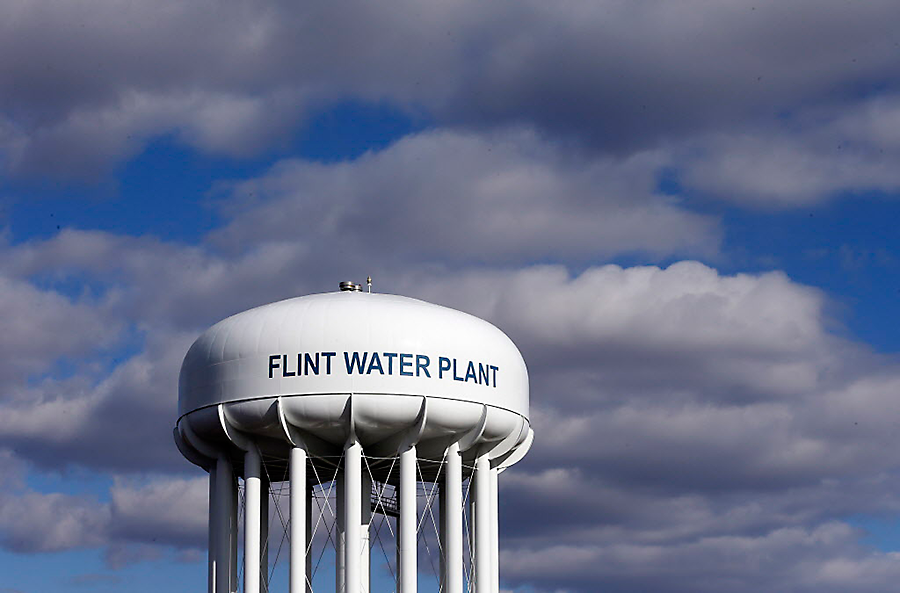Can this app help restore trust in Flint's water?
Loading...
The University of Michigan and Google have created an app and website for residents of Flint and officials in an effort to bring about more transparency in the lead-contamination crisis.
“We’ve developed an essential resource,” Jake Abernethy, an assistant professor of computer science and engineering at the University of Michigan, Ann Arbor, said in a statement. “It’s an independent platform that gives people information they need and want to know as they navigate the complex situation. There’s no playbook for it.”
The crisis has been compounded by a lack of trust ever since the northern Michigan city switched its water supply in 2014 from Detroit's system to the Flint River, which has historically had poor water quality. Shortly afterward evidence started to mount chemicals in the water led to lead contamination. But only about a third of the water in Flint homes has been tested, and residents and advocates have filed a number of lawsuits against officials and government agencies. An app and website that allows residents to follow the progress of the crisis in real-time, then, will offer them some support, said the researchers.
"One of the driving factors with this crisis has been trust," Mark Allison, an assistant professor of computer science at the University of Michigan, Flint and a resident, said in the statement. "With these tools, you can actually see what's being done. We've increased transparency."
The app that went live Thursday is available on Android smartphones and online at Mywater-flint.com.
The tool is meant to provide information about lead-testing results, city-wide water testing, where pipes have been replaced, and the location of distribution centers for waters and filters.
The app also aims to predict which homes are more likely to have elevated levels of lead. It does so by accounting for the age of the property, its location, value, and size.
Researchers say only about a third of the city’s residents have had their water tested.
"It's not an easy thing to do," said Dr. Allison, the Flint resident. "You have to go downtown and pick up a special bottle, and then you have to go drop it off somewhere and the testing process itself is complicated. You can't just use any pipe in the house. The app tells you how to test it, and exactly where test kits are available."
The trouble in Flint more or less started in April 2014, when the city switched its water source from Detroit’s system to the Flint River, which has historically been of poor quality. The decision came during the tenure of state-appointed emergency manager Darnell Earley, who was tasked with enacting cost-cutting measures to stabilize the city’s debt-ridden finances, as the Christian Science Monitor’s Jessica Mendoza reported earlier this year.
Residents began complaining about the water’s taste and smell almost as soon as the switch took place. But officials began to act only in October 2015 – after Virginia Tech professor Marc Edwards tested samples of the water and found levels of lead far above the Environmental Protection Agency’s recommendations.
By then, more than 8,500 children had been exposed to lead. Toward the end of last month, officials said that about 200 Flint children have shown elevated blood-lead levels since the crisis came to light.
The federal government eventually stepped in, providing support to city and state agencies. But residents, city and state officials and agencies, and the ACLU of Michigan have filed lawsuits and countersuits this past year, as CNN reported.
But the tension there isn’t just about repairs to pipes, as Glen Daigger, a professor of engineering practice at the University of Michigan in Ann Arbor, told the Monitor’s Ms. Mendoza.
“It’s one really of confidence, of people having gone through what the citizens of Flint have been going through,” he said. “Quite frankly, confidence has to be restored ... and restoring confidence has to be founded in fact, so that this community can pick up and start moving forward from a social and economic perspective.”
This report contains material from the Associated Press.






